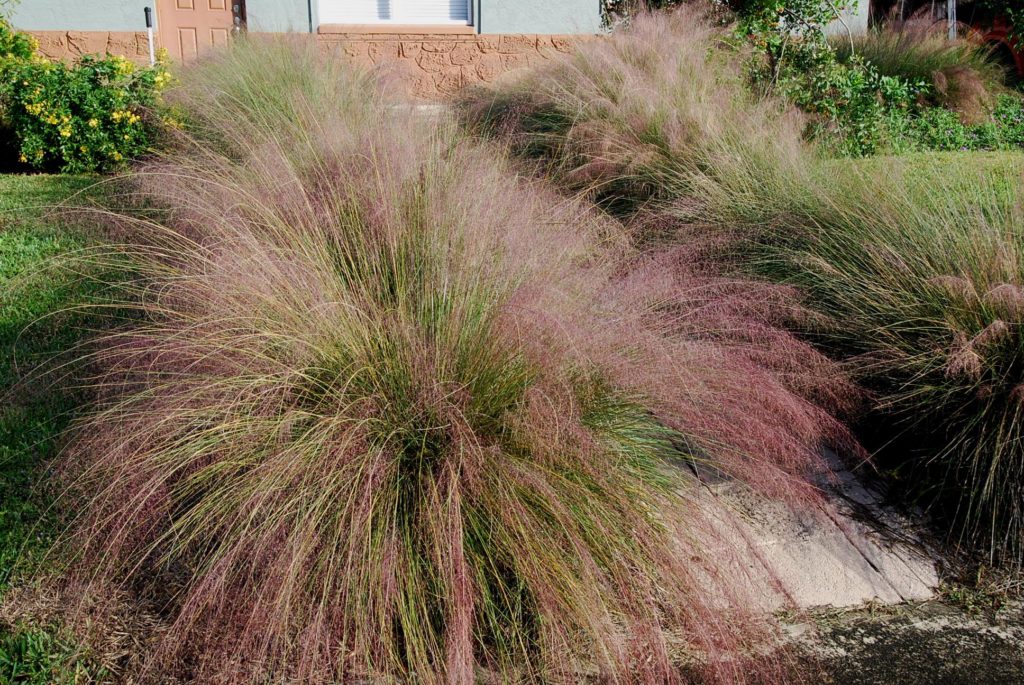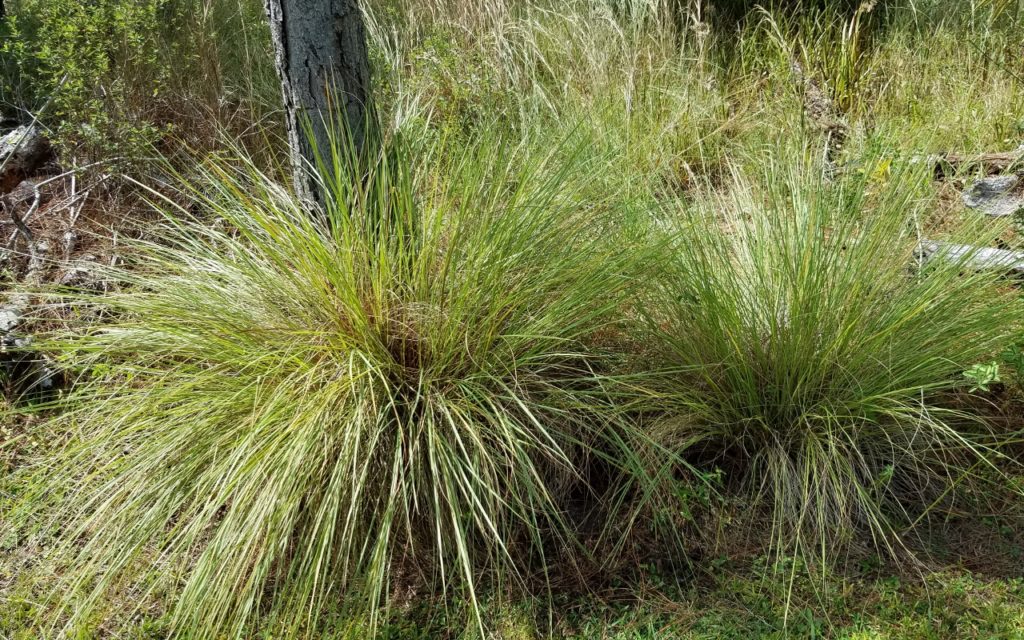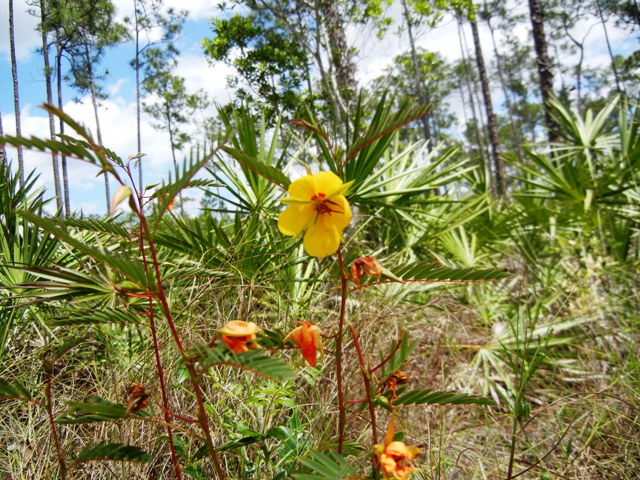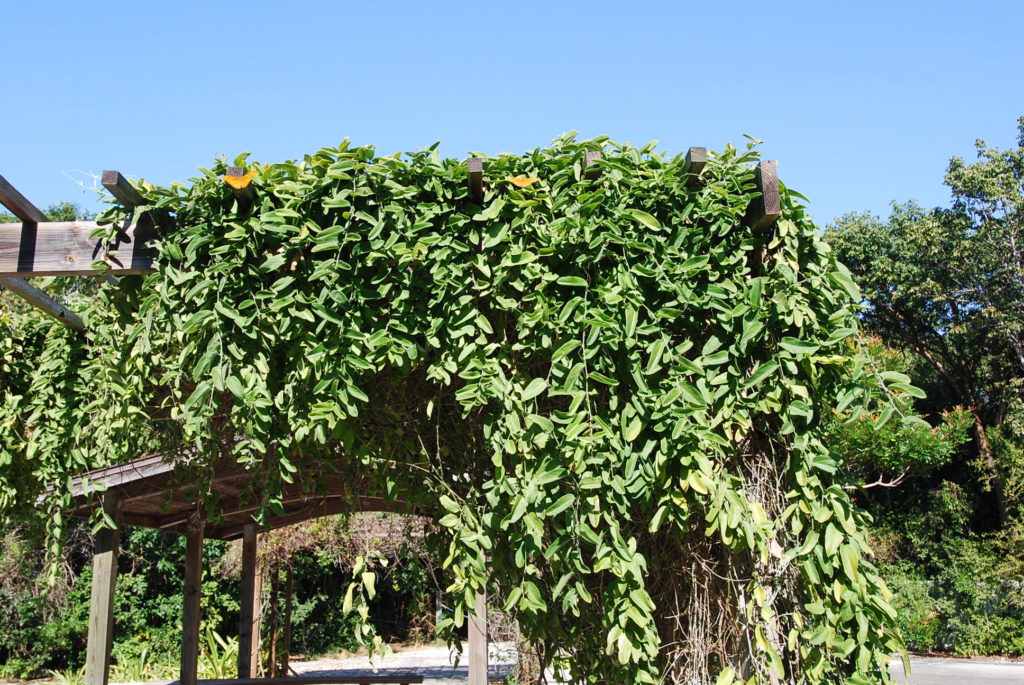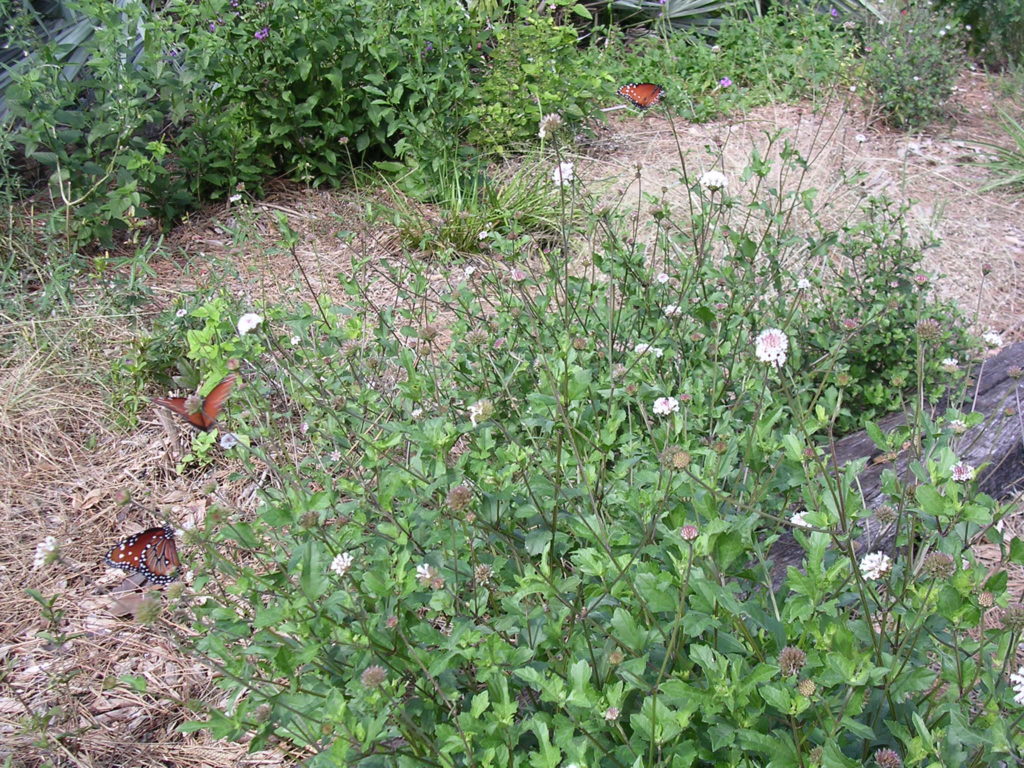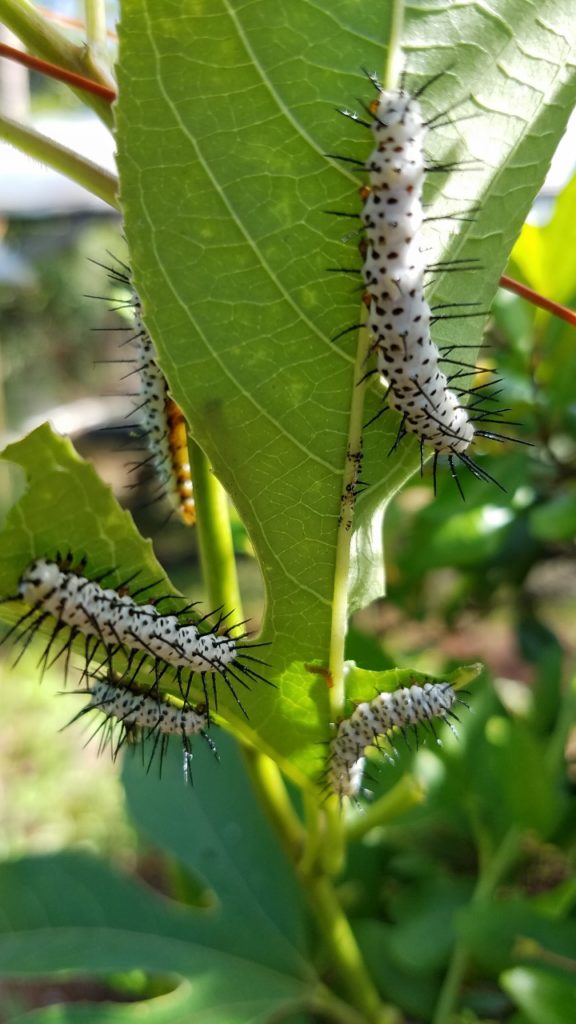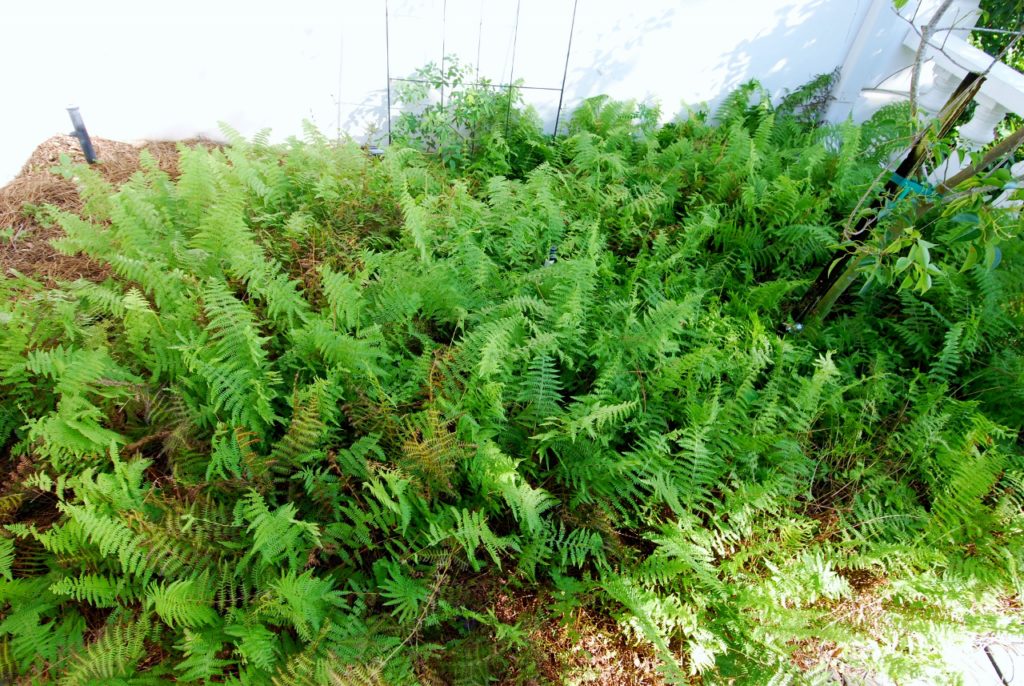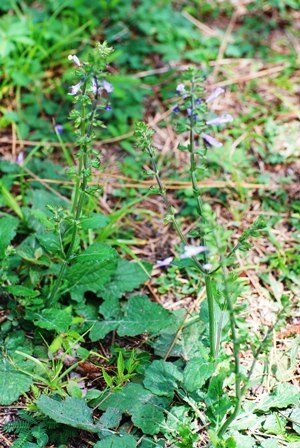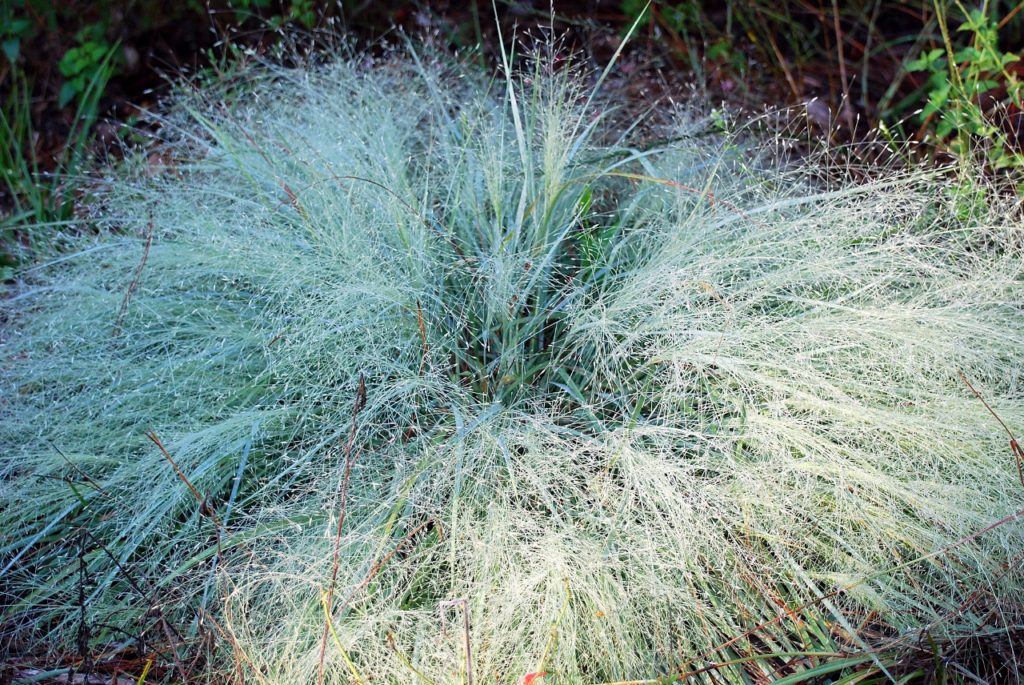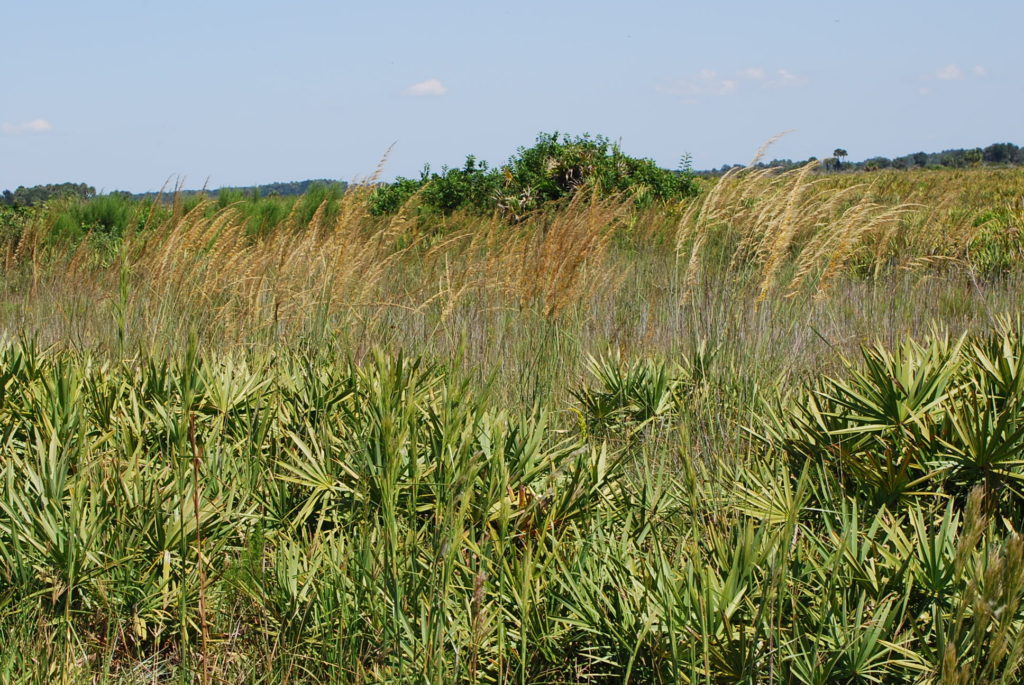Muhlygrass
Muhlenbergia capillaris
Muhlygrass or Hairawnmuhly or just Hairgrass is found throughout much of the eastern and central U.S. in moist, slightly acid to mildly alkaline soils. These include the marl prairies of Everglades National Park, moist pinelands with limerock near the surface, and vast low areas on the west coast of Florida near the Gulf.
It is surprisingly tolerant of salt air and some salt water flooding and can live in marl prairies with months of shallow freshwater flooding.
The thin leaves are smooth and won’t cut you when pulled. They will trip you if planted near a walkway though. These reach a height of about two feet, with the flower heads rising to almost three feet before bending over.
The Gullah people of Georgia and South Carolina use a different species called Sweetgrass or Gulf muhly grass mixed with Longleaf Pine needles and palm leaf strips to make their famous baskets. This species is a bit taller and grows from North Florida through North and South Carolina. Click for more info.
The flowering season is in early fall with masses of billowing pink flowers waving in the slightest breeze. It gives movement to the landscape and looks like pink snow when covered with early morning dew.
In early spring you can either light a match to the base and burn off the old leaves, and new ones too, or put on gloves and gently pull around the base to break off the mass of dead leaves accumulated there.
Or just pull the leaves up straight and cut at the base. Careful, because it is easily uprooted. Place the cut leaves around each plant to provide mulch and suppress weeds. No need to cart this resource away. This works!
Although interesting as small groups mixed with wildflowers and other plants, Pink Muhlygrass is fantastic in a flowing mass. Just plant around two feet apart so that there is little room for weeds to fill in between the plants. Torpedo Grass can be a real problem if not eradicated before planting.
Sand Cordgrass, Fakahatchee Grass, Dwarf Fakahatchee Grass and Andropogon species do well when layered with Muhly Grass. It is also a good soil binder on easily eroded slopes. Mix in some Seaside goldenrod, various mallow species and other tall wildflowers like Narrowleaf Sunflower and Carolina aster for color.
Click for more info.
Florida Gamagrass
Tripsacum floridanum
Florida Gamagrass is also known as Dwarf Fakahatchee Grass. It is naturally found in the Pine Rocklands of Dade and Monroe Counties. It is not tolerant of salt water or air, yet is very drought tolerant once established.
This picture is of planted Florida Gamagrass along the edge of occasionally flooded pinelands on our property. The soil is nutrient poor and floods for up to three weeks, yet is moist to dry most of the year.
The leaves spread out into a wide mound that is under two feet tall and has numerous nut like seeds on three foot or less stalks. Birds eat the seeds which form in the spring.
The old leaves will need to be pulled or burned off when they build up to an unsightly level. These old leaves, which hold disease, may smoother and kill the plant. Otherwise the plants will live for many years.
This is a larval host for the Byssus Skipper, which uses Eastern Gamagrass too in other areas of the country. This is an endangered butterfly and should be provided more places to reproduce. Click for more info..
This, Lopsided Indiangrass and a number of Andropogon species make nice clumps that can be inter planted with wildflowers. Personally, I like to plant this grass near pine trees where they get almost full sun and a raised, drier area to grow on. Masses look nice too though.
Try blending with Muhly grass, Fakahatchee Grass, Scrub Goldenrod, Saw Palmetto, Coontie, Tetrazygia, Winged Sumac, Lopsided Indiangrass, Key’s Porterweed, Snow Squarestem and other Pine Rockland plants.
Click for more info. and here.
Partridge Pea
Chamaecrista fasciculata
Partridge Pea is found throughout Florida and North America in dry, sandy soil both inland and on sand dunes. I have even found colonies of it just out of reach of the ocean in New Smyrna Beach, Florida.
Plants near the ocean seem to grow shorter (under two feet) than the inland ones which can be up to five feet tall. Both last one year and will come back from seed if pods are opened and the seeds scratched into the soil surface. Make sure the pods have seeds that rattle inside them or else you will have empty weevil eaten seeds.
The cloudless sulfur, sleepy orange, orange sulphur, little yellow, gray hairstreak and ceraunus blue butterflies lay their eggs on this plant.
Quail and other seed eating birds eat the seeds and deer eat the leaves. The roots put nitrogen into the soil making poor soils richer. Many species of bees, including bumblebees, and butterflies visit the flowers. The plants used to quake with all the bumblebees nectaring on them, but now we have almost no bumblebees in South Florida.
Partridge Pea mixes well with Salvia, Southern Beebalm, Dune Sunflower, Gaillardia and Beach Creeper. Also, mix in Chapman’s Cassia, Beach Grasses, Keys Lily, Coontie, Spiderwort Florida Keys Thoroughwort and other coastal and pineland plants.
You must have this in a butterfly garden.
Click for more info, and click here.
Whiteflower Passionvine
Passiflora multiflora
This endangered native passionvine is found mainly in the upper Keys. It does well in Palm Beach County and can take near freezing temperatures. The three inch leaves have short, soft hairs on them. Not tolerant of saltwater flooding or salt air.
This is a fast grower that will climb up the nearest tree and pour down from its branches. The small white flowers are in dense clusters and give off a sweet fragrance; stand down wind for a treat. Many pollinators visit the flowers and birds pick off the pellet sized berries.
The vines live for decades and the stems become quite thick over time, yet there is no underground suckering. Control of this vine is easy with occasional trimming.
Grows well in moderately fertile soil and takes drought very well. Plant next to a tree, fence or even in a hanging basket where you can easily watch butterflies lay their eggs. These will develop into butterflies over a few weeks.
Zebra longwings, gulf fritillaries and Julia butterflies lay many eggs on this vine. If you have a few butterflies around, they will soon become quite plentiful. In summer the vines are alive with hovering female butterflies looking for new growth to lay their eggs on.
The male zebra longwings mate with the female just before she emerges from her chrysalid. There are often several hovering around her. Sometimes zebra longwings and gulf fritillaries become so excited by this plant that they…well, see this picture. Shocking, isn’t it?
Julia butterflies were rare in our yard until we planted this vine. Now they are regulars.
If the yard has Firebush, Bloodberry, Salvia, Keys Thoroughwort and other nectar sources, there will be many butterflies from spring to winter.
Click for more info, and here.
Snow Squarestem
Melanthera nivea
Snow Squarestem is normally under two feet tall. The small white flowers are showy, yet a bit sparse. They make up for this by the number of butterflies that they attract. The small seeds are likely used by seed eating birds.
Dry or moist soil in full sun will produce a compact plant that lasts for at least a year. Some self seeding will occur, yet it is well behaved.
Snow Squarestem grows throughout all of Florida up the East Coast to Illinois. It can take moderate salt air but no salt water flooding. It is very drought tolerant once established.
This plant makes a nice mix with the blue flowered key’s Porterweed, Salvia, Southern Beebalm, Gaillardia, Pineland Petunia, Seaside Goldenrod, Beach or Tampa Verbena and other low, bunching flowers, grasses and ferns. Use it as a component of a pineland planting where Beautyberry, Saw Palmetto, low grasses and other pineland plants are used.
There are other taller, up to six feet tall, or shorter local species including the 10 inch tall, mounding, Everglades Squarestem, which is also called Pineland Blackanthers. This little plant has lots of flowers and attracts many butterflies. It lasts a year or more and requires a longer period of watering before becoming fully established. Click for more info.
There are moderate numbers of Snow Squarestem out in western Palm Beach County. Look for it in our natural areas. Down in the Keys, I have noticed a six foot tall form with three inch leaves that is weedy looking, but attracts many butterflies.
In the pinelands, the 10 inch tall Pineland Blackanthers is found among Chapman’s Cassia, Pineland Snowberry, Quailberry, Porterweed, Locustberry and Beach Creeper along the edges of larger and within smaller solution holes.
A thorough knowledge of Rockland plants will give you unique ideas for landscaping.
Click for more info.
Maypop Passionflower
Passiflora incarnata
Maypop Passionflower is found from Florida to Pennsylvania and west to Texas. It likes dry soil in full sun and tends to set the most fruit when climbing on something.
Climbing may help it become more available to carpenter and bumblebees which are its primary pollinators. We no longer have these pollinators in South Florida, which explains why fruit set is nearly zero down here. You can hand pollinate the flowers yourself with a soft brush. The flowers only live for one day, so get out early to do this.
The leaves normally have three palm shaped leaflets, but may have five. There are two glands, or bumps, where the leaf stem meets the leaflets. The similar looking Passiflora incense is a hybrid of Passiflora incarnata x P. cinccinata – which is from South America.
Incense Passiflora has five leaflets and the glands are midway down the leaf petiole (stem). This is commonly sold in stores and suckers too freely. It becomes a nuisance and gets a virus that ruins its appearance. Click for more info. Maypop sends up some root suckers too, but they stay closer to the main plant.
Both the Maypop Passionflower and Incense Passiflora have purple flowers, so look for the leaf lobes and glands to identify the two.
As you can see in this picture, zebra longwing caterpillars love the leaves and will strip the plant clean. Gulf fritillaries often lay their eggs on this plant. Sometimes you can locate a population of Maypop while driving by sunny fields, canal banks or other open areas by noticing the groups of fritillaries hovering around them.
Although this plant prefers dry soil, I have grown it in areas that have short periods of shallow flooding during the rainy season. It dies back to the ground during the winter, yet always seems to have some above ground growth. The vines will grow thirty feet during the growing season.
Try this plant in several areas of your yard until you find a location where they come back each year. This is a great plant to have for butterflies and for you to eat the sweet fruit.
Try a mix of Maypop, Corky and White Flowered Passionvine to provide a larval paradise for zebra longwings, gulf fritillaries and Julia butterflies. It may take a while, but you will have an amazing number of these butterflies in your yard.
Click for more info, and here.
Marsh Fern
Thelypteris palustris
Marsh Fern or Eastern Marsh Fern is found in the eastern half of the U.S. and Canada. It likes moist sunny to moderately shady locations and rarely gets over 18 inches tall.
The leaves are light green with some soft hairs on the veins. It also has a nice grassy smell when crushed. For a full description click here.
The root system is a tight tangle of rhizomes that spread slowly. They are thick enough to hold moisture during short periods of drought. It is rare that this plant will wander too far from the planting site. Just pull the escapees and plant somewhere else.
The picture above is from a shady doorway planting that only gets water during drought. It has done well for over six years now. I also mixed it with Swamp, Goldenfoot and Giant Leather ferns in a swamp planting on the eastern side of the house.
This location is normally fairly dry and gets occasional watering. Walking along the path through the ferns, Florida Elm, Myrsine, Swamp Dogwood, Dahoon Holly, Swamp Redbay, Water Hickory, Basketgrass and other wetland species is very relaxing.
The Marsh Fern Moth caterpillar may chew up some of your young leaves, but I have only seen one infestation and it ended on its own. The dense growth also provides cover for birds and other wildlife.
The young leaves boiled are also considered edible although I have not tried them yet. Please read up before eating anything I recommend. Click for more info.
Lyre Leaved Sage
Salvia lyrata
Lyre Leaved or Lyreleaf Sage is native to most of the Eastern U.S. down to Martin County. There is a lot of it along the Florida Turnpike south of Orlando. Get out of your car and look down.
The leaves are shaped like a fiddle (Lyre) and are up to eight inches long, but usually around Four. The rosette of leaves is only six inches tall and makes a low groundcover.
Lots of seedlings come up if the plant is allowed to seed. Whole areas of the yard may be covered with seedlings and these mix well with other low wildflowers for a mixed lawn.
I grow it with Sunshine Mimosa, Fogfruit and Browne’s Savory in the parking area of my yard. Moderate car and foot traffic are fine. The edge of my shady lawn is blue with the flowers in late winter and spring. I’m sure the painted buntings and other seed eating birds are feeding on it. They like the immature Red Salvia seed.
This is also a good steamed vegetable. Click for more info. It has a mild minty flavor and is said to be slightly laxative, so try a little at a time.
My experience with this plant is that it lasts for years, comes up readily from seed and may occasionally need to be pulled, although I have never had to.
It is not salt tolerant, but will grow in moist to dry soil in full sun to fairly deep shade.
This is the perfect plant to spread around the neighborhood when no one is looking. Just scatter a few in the community swale. Some will love you for it and you “have no idea where they came from” for the rest.
Click for more info.
Elliott’s Love Grass
Eragrostis elliottii
Elliott’s Love Grass is often seen in moist pine flatwoods, vacant lots and Longleaf Pine communities across all of Florida and the Southeast. It stays below 12 inches and is a beautiful blue color.
It can tolerate drought and short term flooding with fresh or brackish water. Plant far back from the dune; it can only tolerate some salt wind.
This is nice for the edge of a planting. Make sure it gets plenty of light and some moisture. It usually dies after the first year or two. Sometimes seedlings come up or you can easily grow new plants from seed in a vegetable soil mix.
I like to mix this with other grasses, wildflowers and low shrubs. It goes well with Split Beard Broomsedge, Pineland Dropseed, Native Porterweed, Lopsided Indiangrasss, Swamp Fern, Yellow Canna Lily, Florida Lily, Pineland Petunia, Silkgrass, Seaside Goldenrod, Muhly Grass, Sand Cordgrass, Prairie Iris, Red Salvia, Coreopsis and other wildflowers.
I once planted the whole front of someone’s yard, not my suggestion, with this grass. It looked great and went to seed that fall. Unfortunately the ripe seed panicles broke off the plant and blew around the neighborhood. It looked like it had snown and took a while for me to rake them up.
This is also a good source of seed for songbirds.
Click for more info, and here.
Lopsided Indiangrass
Sorghastrum secundum
Lopsided Indiangrass is naturally found in moist areas of our pine flatwoods. The Rocklands of Everglades National Park are swaying with the seed stalks of this beautiful grass in late September. Some of the moist pineland preserves in Palm Beach County have clumps here and there.
The plant has a nice full mat of leaves only two feet tall, similar to a Florida Gama Grass, for most of the year. When it flowers in late September, the stalks rise to five or six feet and have seeds on one side of the top portion. These are golden colored and shimmer in the wind.
Unfortunately they only last about a month before dropping. Some pulling of old leaves may be necessary. I usually burn mine each year, although one year I managed to kill them with this method.
This grass will last for years and makes a nice component to a landscape mimicking a moist pineland. Try mixing with other pineland species like Silkgrass, Florida Lily, Chapman’s Goldenrod, Lovegrass, Splitbeard Bluestem, Pineland Dropseed, Rattlesnake Master, Pineland Petunia, Snow Squarestem, Thistle and Coreopsis.
For drier areas around this that don’t flood, mix with Chapman’s Cassia, Native Porterweed, Silverpalm, Winged Sumac, and Coontie.
Click for more info, and here.
